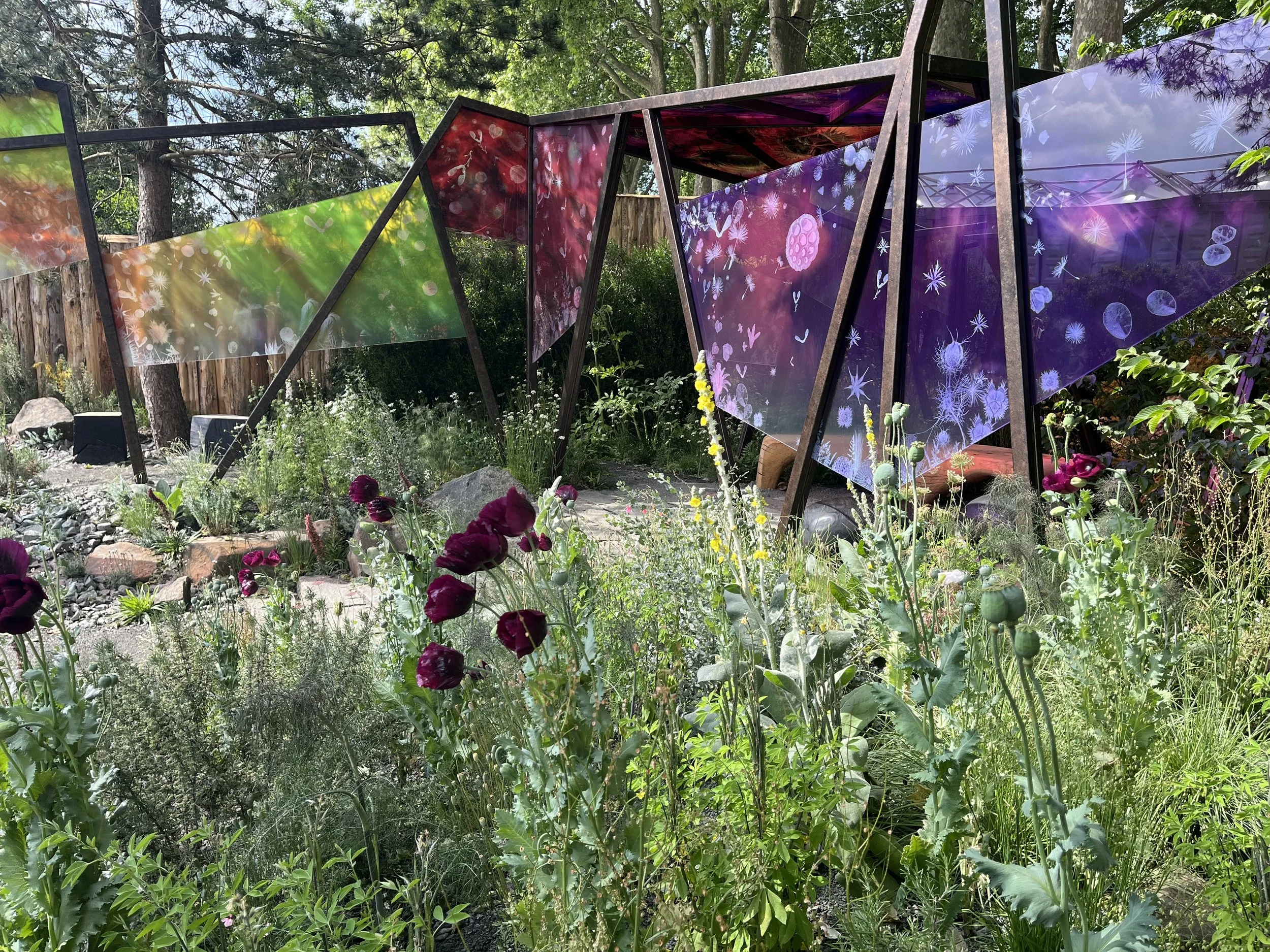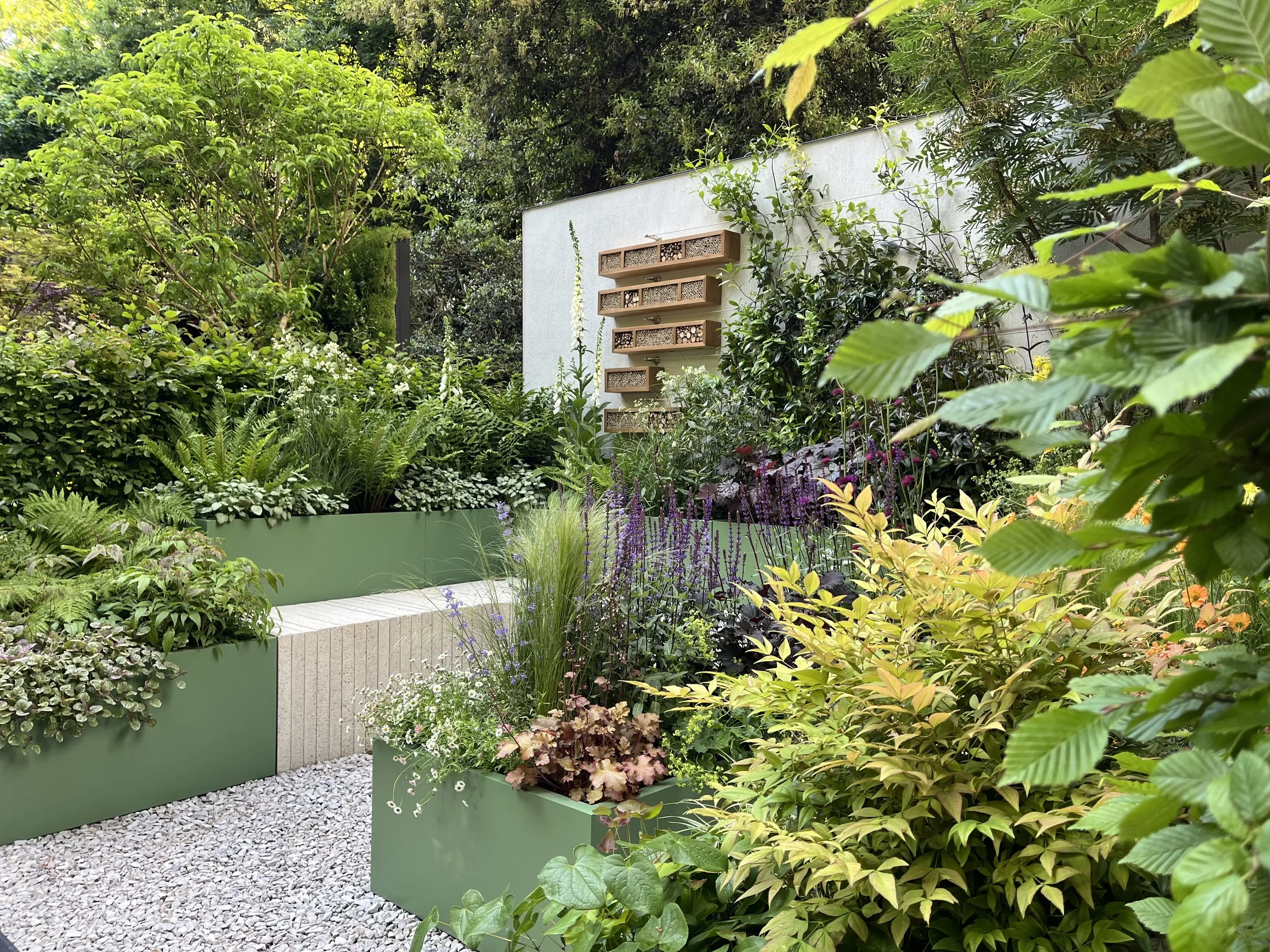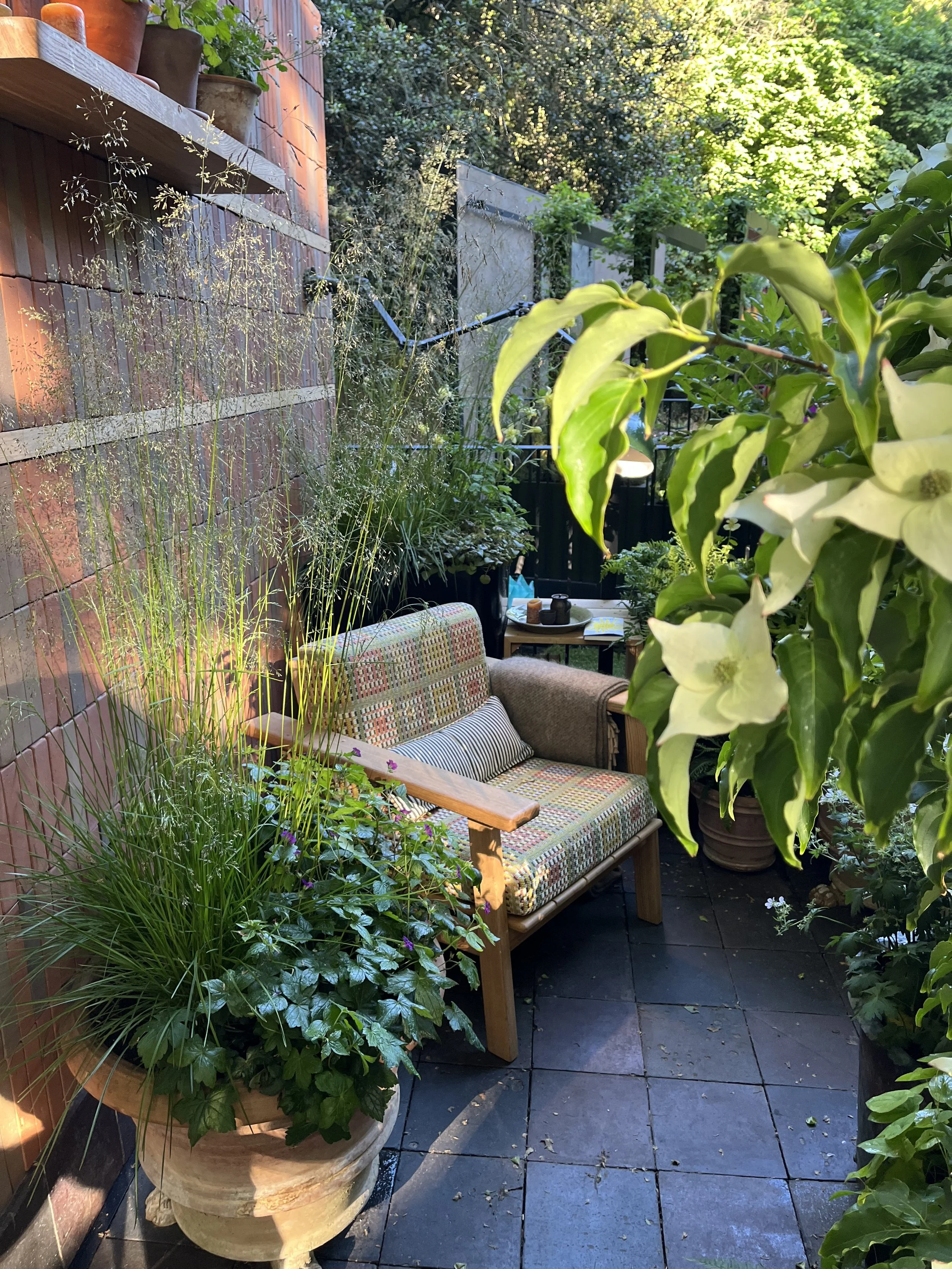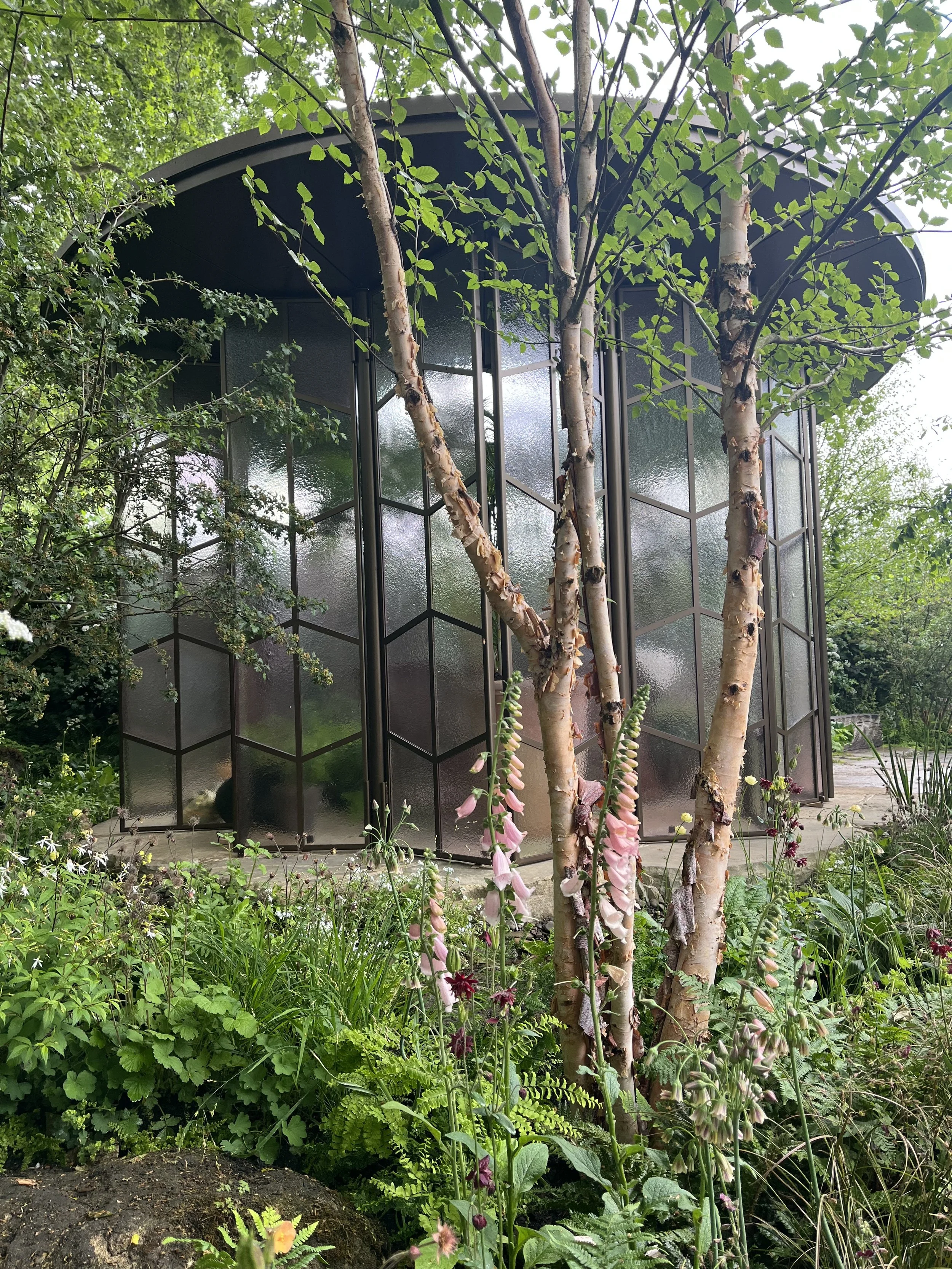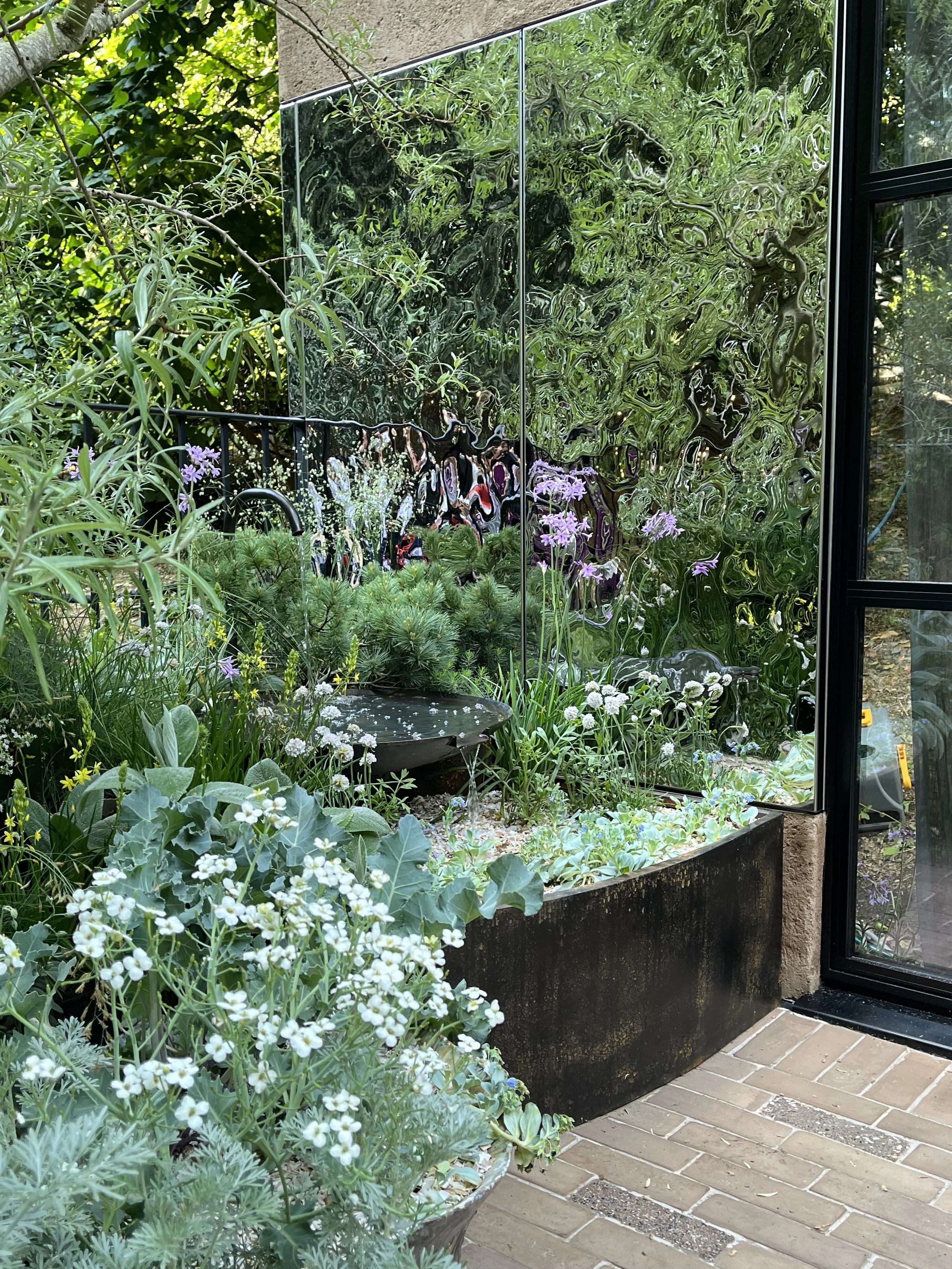Something that could be perceived as outdated, yet still prevails, is that many people visit the prestigious RHS Chelsea Flower Show expecting to be wowed by the grandness of the gardens, much like they were in days of old; when the big corporates sponsored designers to build extravagant, potentially unachievable (to us mortals) works of art, with very little thought around the environmental impact of materials used, construction methods and certainly not a whisper of sustainability - gasp, what even is that?
Thankfully, the tide has truly turned and we now see more focus on what is going on behind the scenes with an insistence on rehoming the gardens and a strong encouragement on using sustainable materials, planning clever water capture methods and building with minimal ground disturbance.
This year, it was also wonderful to see so many of the planting schemes blending foraging, feeding and biodiversity needs, using companion planting and showing an in-depth knowledge of ecosystems, thus demonstrating how we as mere consumers can future-proof our own green spaces. I felt visitors were given renewed confidence that experimenting is actually okay, and gained vital inspiration in ways to interact with their own garden.
Indeed, the ‘Garden Of The Future’ designed by Butler & Parker was absolutely packed full of nature-based features; an innovative circular toilet, multi-use productive green roof, amazingly textural rammed earth walls, and planting based on a cleverly planned mix of climate-resilient ornamentals and crops, along with edible plants with multiple uses and properties. All provide hope and inspiration for a better use of our precious land.
Also, the stunning ‘Avanade Intelligent Garden’ designed by Tom Massey and Ye Aha, a beautiful reflective foraging forest garden with a building clad in mycelium panels and reclaimed wood, cleverly integrating AI for monitoring behaviours and health of the trees and soil. A controversial subject that has sparked much debate within the industry, this being the first show garden to feature such groundbreaking technology, with the intention of being able to talk to our trees to better serve their needs.
It really has been so positive to see more emphasis on living within the garden rather than treating it as a place to look at.
We spend more and more of our time perched inside, connected to technology and even, ironically, looking at nature scenes on our devices, occasionally peering at the real outside world above our screens. Yes, that alone does have its benefits, but to truly reap the rewards that nature selflessly provides, we need to feel, touch, smell, as well as see. It is this that provides the link to biophilic design in gardens and landscapes.
Back to the Chelsea Flower Show and the progress shown by the thoughtfully designed gardens this year seems to indicate thought towards a greater, true purpose of gardens and green spaces; the Biophilic way.
Of course, biophilic design links perfectly to regenerative design, a way to make a lasting positive impact on the land, one step beyond zero impact. Wouldn’t it be heart-warming to see the RHS looking at this too; sustainable just doesn’t cut it anymore.
Written by Sarah Croud @thegardenrevampco
Photos by Vanessa Champion
